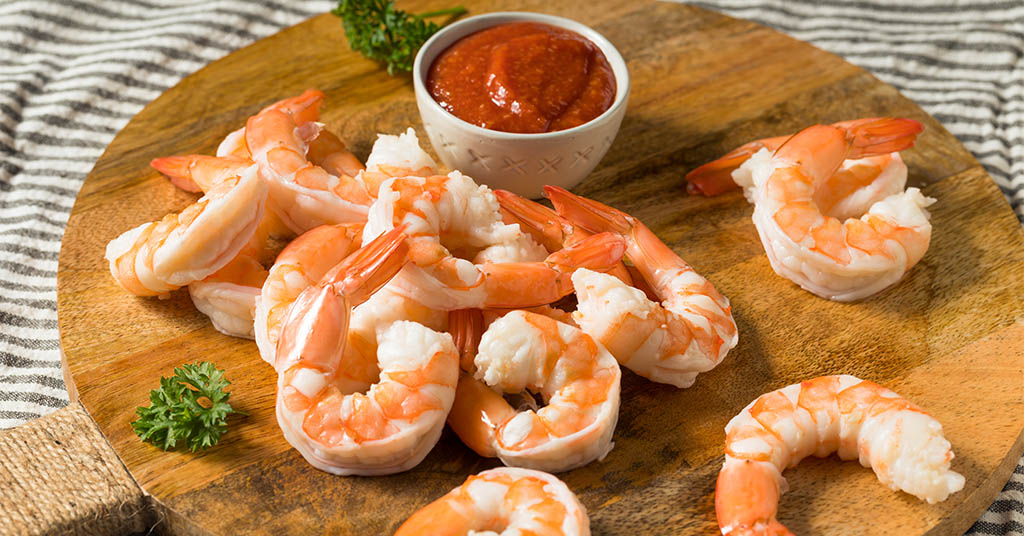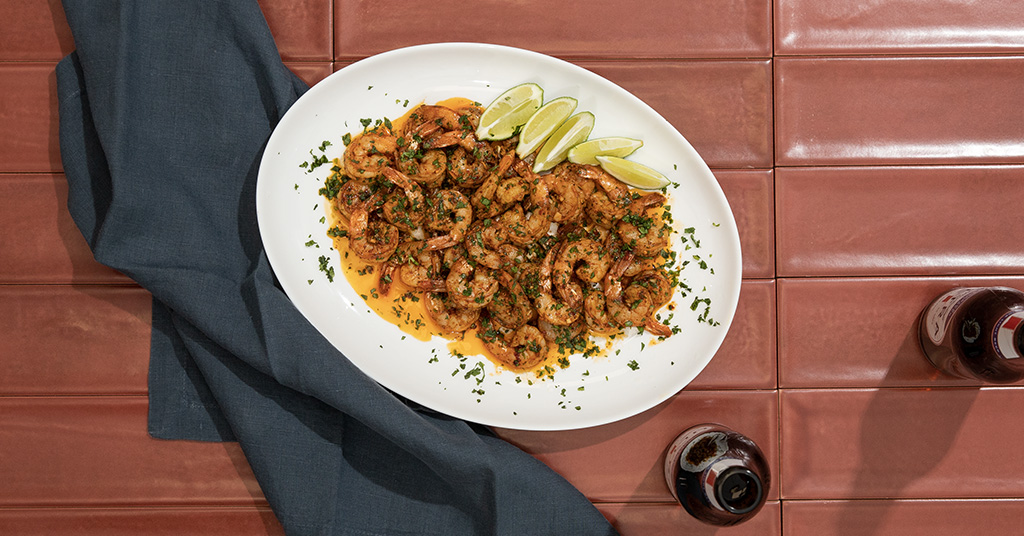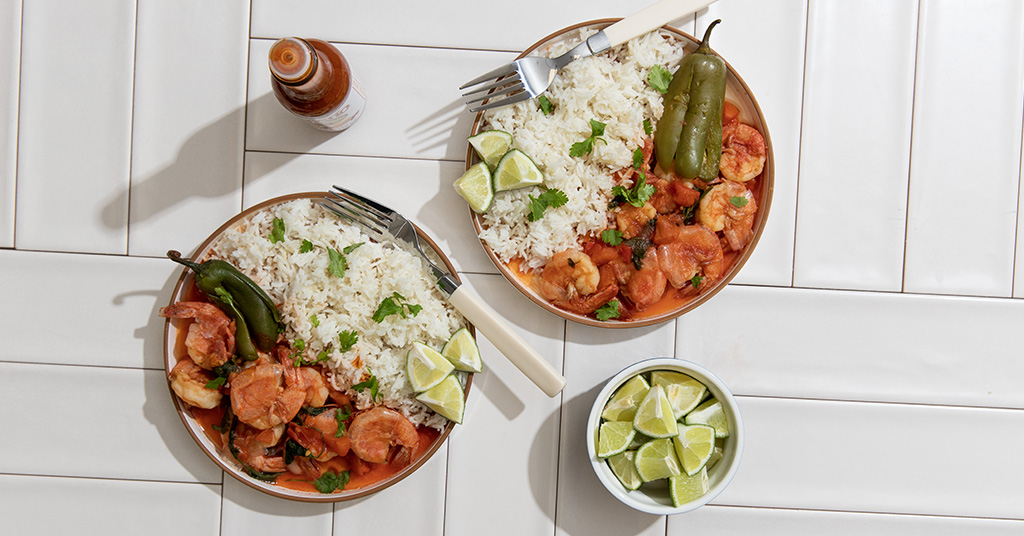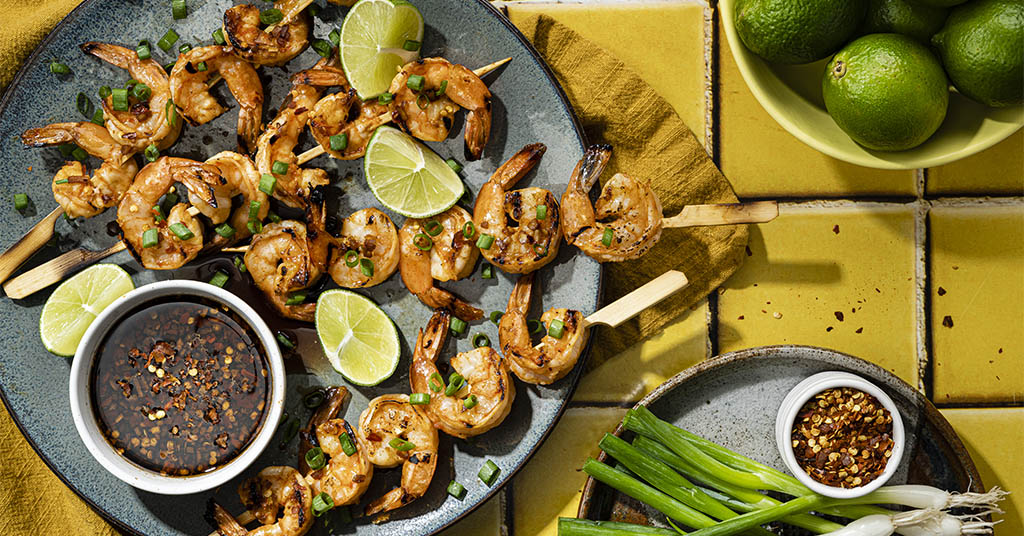Shrimp are a small shellfish that are found in cuisines around the world and right here in California. They’re a popular choice for foodies because of their unique flavor, the simplicity of kitchen skills required to cook them, and for their lean protein. If you’re new to cooking and have concerns about including shrimp in your meals, there is no need to worry. Most of the work needed to cook shrimp is in its pre-cooking prep stage. We’re going to over a few tips and tricks you need to know about cooking with shrimp including deveining, deshelling, and how to tell when your shrimp are done cooking. Okay, and maybe a recipe or two for you to try too.
How do you peel shrimp?

As we mentioned earlier, shrimp are a shellfish species, meaning they have an exterior shell that needs to be peeled before eating. The shell can be eaten, however, it has an unpleasant and crunchy texture. Think of an orange, technically the peel can be eaten but it’s not pleasant because of its bitter taste and what you’re really looking for is the inside!
To peel shrimp, begin at the head, peeling off the feet first and then peel back the shell back towards the tail. Once you pull off the feet, there is an opening where you can find the shell’s opening. The tail can be removed as well by pulling the body away from the end, although you can leave it on if you prefer. Leaving the tail on helps retain the shrimp’s shape better, is visually appealing, and can add additional flavor when you’re cooking it. Don’t immediately discard the shells, we’ll tell you how to use them to add more flavor below.
How do you devein shrimp?
Shrimp have a digestive tract that runs through their center from the head to tail and leaving it in can be slightly unappetizing to the eye. Deveining shrimp is the process of removing the digestive tract of the shrimp and it’s fairly easy to do. Carefully take a knife and make a shallow cut along the top of the shrimp from the head until the you’re halfway across. That exposes the tract and you can remove it using a small spoon, cooking tweezers, or by carefully using the tip of the knife. The tract should remove in one solid strand. Once you’re finished deveining the individual shrimp, place them in an ice water bath to keep them cool until you’re ready to cook them.
What can shrimp shells be used for?
It’s a good thing your shrimp shells didn’t make it straight to the garbage can! The shells have lots of rich sugars that easily infuse into sauces, stocks, and much more. If you’re making a sauce, add shrimp shells, water, the sauce’s aromatics and cover with a lid. Strain out the shells when the sauce is ready. For shrimp stock, wrap shrimp in cheesecloth and tie with a knot to easily remove them once it’s done cooking.
Cooking shrimp

There are endless ways to cook shrimp! They can be fried, grilled, air fried, roasted, and so forth. Because of their delicate flavor, shrimp are great in pastas, soups, stews, and a variety of other dishes. Shrimp are also one of the easiest proteins to cook because they change to a deep pink color once they’re finished cooking. However, keep an eye on shrimp when they’re cooking and be sure to turn off the flame once they’re pink; shrimp can over cook easily and have a unpleasant rubbery texture.
Here are a few of our favorite shrimp recipes:
Air Fried Chili Lime Shrimp
This quick and easy recipe comes together in minutes! Air frying them gives them the perfect texture and Famous Dave’s seasoning turns up the heat.
Ingredients:
- Stater Bros. Large Raw Shrimp
- Full Circle Market Paprika, to taste
- 3 Cloves Garlic
- 2 Limes
- Salt, to taste
- Full Circle Market Organic Olive Oil
- 1/2 stick Stater Bros. Salted Butter
- Famous Dave’s Devil’s Spit Seasoning
- Cilantro, to taste
Directions:
Start with defrosted shrimp. Drain any liquid from the bag, pat the shrimp dry and peel off the shells. In a medium bowl, toss the shrimp with paprika, salt, chopped garlic, the juice of 1 lime and olive oil. Measure with your heart. Air fry at 375 for about 9 minutes. Place cooked shrimp in a clean bowl and toss in 1/2 stick of melted butter, spicy seasoning and cilantro. Our shrimp came out with a nice mild level of spice, so feel free to add a little less or way more of the spicy seasoning depending on your spice preferences. Serve topped with cilantro and a fresh squeeze of lime. Enjoy!
Camarones a La Diabla (Spicy Tomato Shrimp Stew)

Camarones a la Diabla is a spicy tomato-based shrimp stew that’s made with just a few ingredients. Simply toss everything into a pot, stir, and bring to a simmer! Serve with steamed white rice and garnish with lime wedges
Ingredients:
- 64 FL OZ. Stater Brothers 100% Vegetable Juice
- 2 or 3 lbs. Stater Brothers Large Shrimp
- 3 Jalapeños
- 4 Roma tomatoes
- 1 Green onion bunch
- 1 Cilantro Bunch
- Salt
- Lime
- Tapatio Salsa
Directions:
In a pot add vegetable juice and shrimp and cook on medium heat. Split Jalapeños and green onion almost to the top and add them to the pot. Add a cilantro bunch and chopped Roma tomatoes to the pot. Season with salt, bring the stew to a simmer, and continue cooking until the stew reduces slightly. Serve with white rice, a squeeze of lime, and Tapatio sauce.
Now that you’ve learned some helpful tips and tricks about cooking shrimp, it’s time to practice your new skills. Check out these delicious shrimp recipes!
